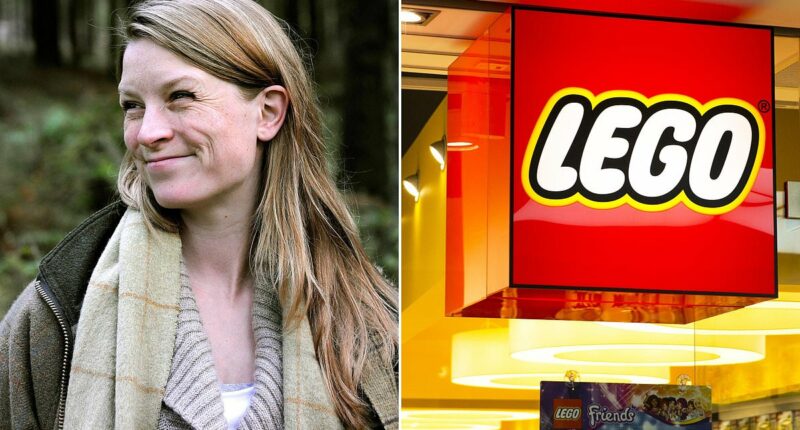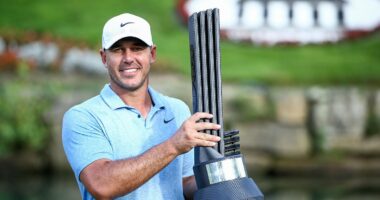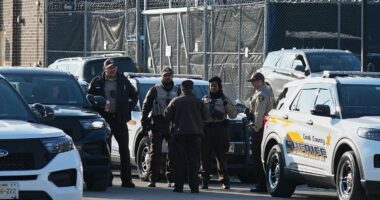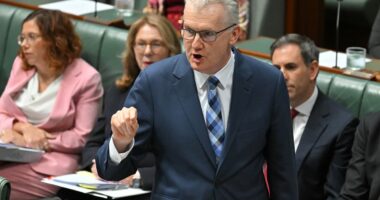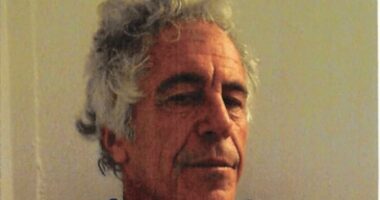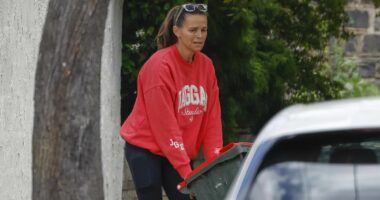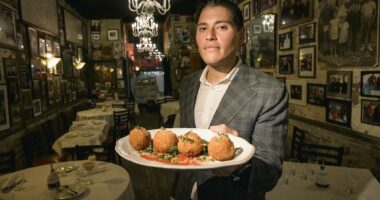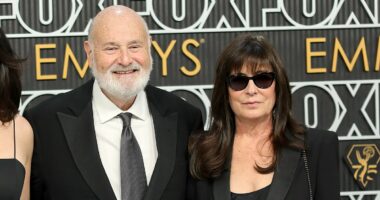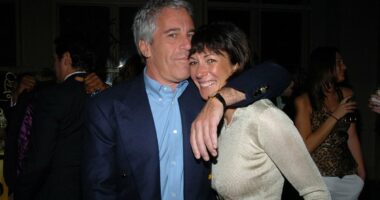Share this @internewscast.com
Resting at the entrance of Strathconon, the longest glen in Scotland, the historic Scatwell Estate has endured a rich history of foreign influences.
With its name rooted in Norse language, the precise meaning of “Scatwell” has faded over centuries. Some suggest it signifies a place of transaction, derived from ‘skat’ meaning tax and ‘vollr’ referring to a field.
Others argue it originates from ‘skati,’ implying a place rich in wood or large logs, potentially targeted by Vikings for its timber. Regardless of its true origin, Scandinavian interest in Scatwell’s natural bounty has been longstanding.
Today, this allure remains, underscored by the recent acquisition of Scatwell by Sofie Kirk Kristiansen, a Danish heiress to the Lego fortune.
Kristiansen’s purchase of the 3,500-hectare estate in Ross-shire seems fitting, given her ownership of the adjacent, larger Strathconon Estate.
While her acquisition of the estate was anticipated, the staggering sum she paid—exceeding £25 million—raised eyebrows, especially as some experts believe the land’s value to be considerably less.
From Ms Kirk Kristiansen’s point of view, this must have seemed a logical addition to the more than 28,000 hectares her family already own in this sparsely populated expanse of open hill and narrow mountainous landscape.
And she is hardly the first to spearhead this modern-day Norse invasion, given that her compatriot, Anders Hoch Povlsen, alone owns more than 89,000 hectares – or one per cent of Scotland’s total landmass.

Lego heiress Sofie Kirk Kristiansen, who paid £25 million for a 3,300 acres estate in Ross-shire

The Lego empire started as a simple child’s toy and became a global brand worth more than £20bn
Nevertheless, the purchase of Scatwell has again brought into sharp focus questions about the concentration of land ownership in the hands of a few rich investors, even as a parliamentary bill has been passed by Holyrood aimed at facilitating the breaking up of these vast holdings and offer them back to the community.
Strathconon Estate, which also manages Scardroy and Ledgowan, said the purchase would help transform the newly amalgamated properties from a ‘classic Highland shooting estate’ to a ‘wholehearted nature restoration project’.
Although this doesn’t account for the eye-watering price tag, it may hint at why a woman, worth more than £5bn, who could literally afford to do anything in the world that her heart desires, should choose to spend her time buying up huge swathes of open moorland in the wilds of Scotland.
Such land has become dramatically more expensive over the past decade, as so-called green lairds realise the value of old shooting estates as places of ‘natural capital’ to restore peatlands and forests.
These can generate credits that corporations invest in to offset their carbon emissions.
While many environmentalists support this shift, the concern for land reformers is that roughly half of all privately owned rural land in Scotland remains in the hands of just 421 landowners and that, to their minds, is empirically wrong.
The SNP Government, egged on by the Scottish Greens, have been keen to diversify ownership and the Land Reform (Scotland) Bill is their latest effort, which could allow the government to intervene in private sales and potentially break up large estates. Ministers will be notified before any sale greater than 1,000 hectares, which also gives community groups the opportunity to table a rival bid.
Against such a polarised backdrop, it would be easy to portray the new owner of Scatwell as just another bored billionaire businesswoman looking to swap Lego bricks for a new plaything.
Yet, Sofie Kirk Kristiansen, who turned 49 last Tuesday[NOV 18], would baulk at such descriptions of her as a traditional landowner.
She may have been born into the family which built Lego from a simple child’s toy into a global brand worth more than £20bn, but she never showed any desire to run it. Instead, she has used her inherited wealth to pursue her own deep-rooted love of nature.
While the imaginations of children around the world were drawn to the small, brightly-coloured interlocking plastic bricks which Lego produced, it seems the only colour which interested Sofie was green.
In truth, Ms Kirk Kristiansen has always admitted feeling something of an outsider growing up within one of Europe’s richest families.
Lego is a byword for wealth in Denmark, and especially so in the town of Billund, where Sofie’s great-grandfather, Ole, a carpenter who started off making wooden toys, dreamed up the concept of the world-famous Lego brick and his son, Godtfredt, helped develop it into a global success story.
Her own father, Kjeld, who would later take over the business, was often away. When he was home, business talk often dominated the dinner table.
The eldest of three, Sofie was born in Switzerland where her parents were based in the early 1970s but returned to Billund as a seven-month-old.
She found it tough to find her feet in this goldfish bowl of a town, where thousands of residents worked for Lego, including many of her classmates’ parents.

Lego makes around 60 billion bricks per year – and is beloved by children and adults alike
According to the Danish writer Jens Andersen, who has chronicled the Lego story, if there had been layoffs at the company, she didn’t dare show her face at school.
While her brother, Thomas, now 46, would eventually go into the business (he now chairs the company), she and her sister, Agnete, 42, took refuge in nature and horses.
At the family home, Schelenborg, a manor house dating to the 13th century on the island of Funen, west of Copenhagen, she was able to escape into the forest, where she forged a close bond with the natural world.
An intensely private person, Sofie once explained: ‘The place I feel most at home has always been in the woods with animals. It’s where I can feel who I am.’ More, she felt compelled to put her love of nature into practice.
She said: ‘I think I always knew that being part of nature was as important to me as breathing. So I’m very grateful that my family has supported me in my desire for freedom, allowing me to devote myself 100 per cent to my life with the woods and animals. It is a loving support and understanding that binds us even closer together as a family.’
Several years ago, she opted to take a back seat as a ‘passive owner’ in the company and in November 2023, she sold £720million worth of her shares in the toy company back to her family members so she could focus on conservation projects.
The Schelenborg estate was established by her father as a centre for horse-breeding and equestrian sports, so Sofie and Agnete were in their element from an early age. Agnete became an Olympic dressage rider, competing in the 2016 Games in Rio de Janeiro.
Sofie took to conservation, studying ethnography and social anthropology at Aarhus University in Denmark. When she married the lawyer Christopher Kiaer Thomsen in 2005 her parents gave her as a wedding present a forest estate on the Danish mainland named Klelund Dyrehave, which they have rewilded with the reintroduction of wolves, deer and boar. As the estate website explains: ‘Now we can take a step back and watch nature evolve with a minimum of intervention on our part.’
They rebuilt an old hunting lodge as their home and settled into married life. Moving in the upper circles of Danish society, Sofie became close friends with Princess Mary of Denmark, and the pair would holiday with their families in Klosters.
But within a decade, Sofie’s marriage had crumbled and in 2014, the couple divorced. Sofie and the couple’s two daughters continued to live at the hunting lodge while the Danish tabloid press, eager to detect scandal, reported that her husband was in a relationship with Christina Rehnquist, a flight attendant on one of the Lego family’s private jets.
Amid the swirling publicity, Sofie retreated further into her conservation work.
She set up the organisation Earthkeeper, using her billions to further its aim of funding ‘projects that create breathing spaces for the natural world’. Its projects include the conservation of virgin rainforest in Ecuador and handing over her Danish estate to ‘wild nature’.
On its website, she writes: ‘Since my earliest childhood, I have felt two things most strongly in my life: a desire to make a difference, and a strong sense of love for and oneness with nature.’
To that end, she adds: ‘I am nourished on a deep spiritual level by my sense of oneness with every little facet of nature; a sense of connectedness with the infinite love that is the source of all things. You could say Earthkeeper is my way of balancing my inner and outer worlds.’
In his book, The Lego Story, Mr Andersen, wrote: ‘Sofie’s decision to be a passive owner in Lego stems from a desire to be able to fully devote herself to her everlasting love of nature, which originates from her many childhood memories at Schelenborg, where she could be herself in the forests and with the animals without anyone expecting more than that.’
But while this child of Lego continues to lean on the family’s fortune to save the planet, the company’s own green credentials have been called into question.
Lego makes around 60 billion bricks per year, but the type of plastic it needs uses roughly two tonnes of petrochemicals to produce each tonne of Lego.
It ploughs millions each year into research to find more sustainable ways of working, including switching to renewable energy to power its network of factories.
But it’s been slow progress.
Meanwhile, its reputation took a hit in 1997 when a ship accident off the UK coast led to 62 containers (some with nearly 5 million Lego pieces) falling into the sea.
Some pieces are still being discovered almost 30 years on. For a company whose name derives from the Danish phrase ‘legt godt’, meaning ‘play well’, it was acute embarrassment.
Climate change activists also point to the three private jets the Kristiansen family own (including one belonging to Sofie) to jet around Europe.
Yet any heavy polluting activities have not translated into any major consumer backlash as Lego’s popularity among children and a new wave of affluent AFOLs (Adult Fans of Lego) has surged amid tie-ins with Star Wars, Harry Potter and F1.
Nor has it deterred Sofie Kirk Kristiansen from her core purpose and in her bid to widen her foothold in the Highlands, money would prove no object.
When the deed of sale for Scatwell was obtained by land reform campaigner and former Green MSP Andy Wightman and published on his Land Matters blog, he labelled the £25.2million price tag for what amounted to ‘high hill ground and some woodland’ as ‘astonishing’.
He suggested the market value would be closer to £7million and criticised the deal as ‘one example of the growing concentration of private rural landownership in Scotland in the past decade’, adding that the huge sums being spent are pricing local communities out of any hope of mounting buyouts.
Ms Kirk Kristiansen might argue that it was her father, Kjeld, who originally purchased the main Strathconon Estate in 1995 before handing it over to her, so it was already ‘in the family’.
Like her fellow Dane, Povlson, she wants to see the land moved away from a traditional shooting estate and returned to wild nature through native woodland recovery, peatland restoration and managing the deer population.
She hopes to improve habitats for key native species such as golden eagle, ptarmigan, otter, salmon, red squirrel and Scots pine.
One frequent criticism of rewilders is that they place nature above people – Sofie employs just 16 staff on her Highland estates.
But she has tried to build good relations with the local community, improving tenants’ houses, restoring the village hall and notably, at one stage, stepping in to save a school when it faced threat of closure.
One local source, who asked not to be named, said: ‘I don’t think anyone has looked after a place as well as they have. They scrimp on nothing when it comes to looking after employees and the estate.’
Sir Edward Mountain, MSP for the Highlands, who worked with her for several years as a land manager, backs that view.
He said: ‘The family always invested in the local community and worked with them, whether it was running the Strathconon Games, which were always held on the estate, or helping to maintain the Strathconon Hall.
‘Sofie is a particularly nice woman, but I think the whole family is. It was a pleasure to work with them and we should welcome their continued involvement in Scotland.’
She may dream of constructing her own private wilderness, but Sofie Kirk Kristiansen will remain the landowner that Lego built. Brick by brick.
